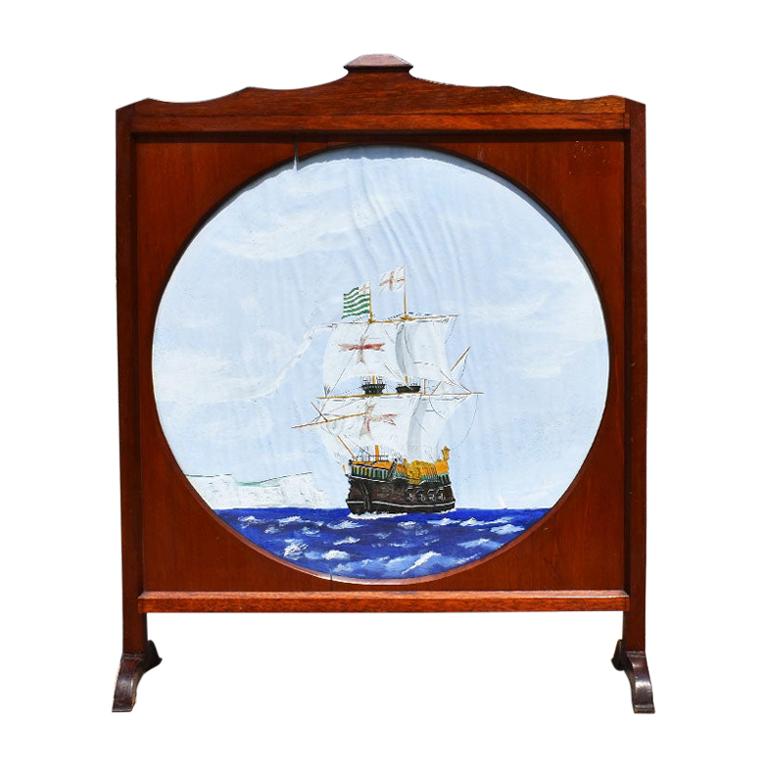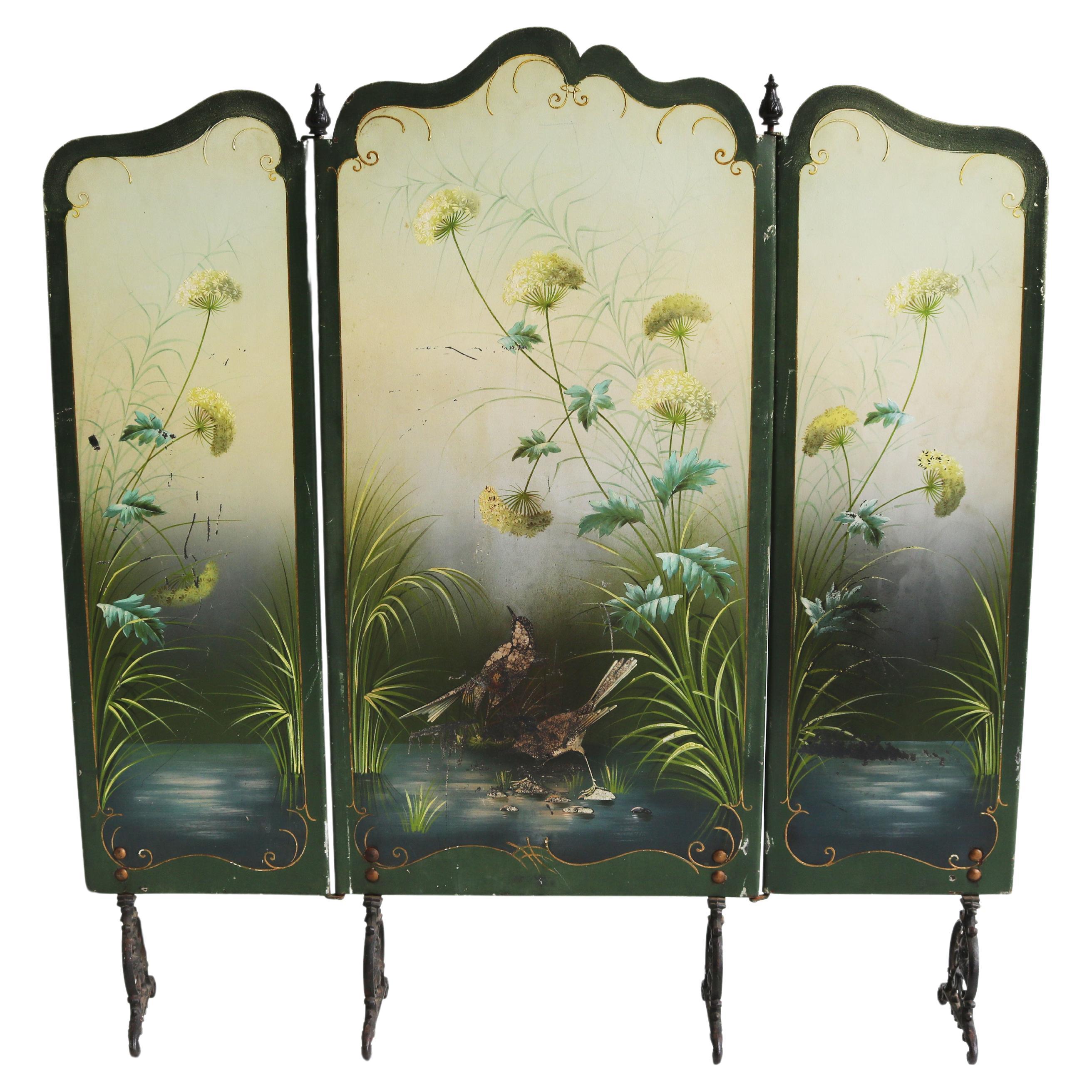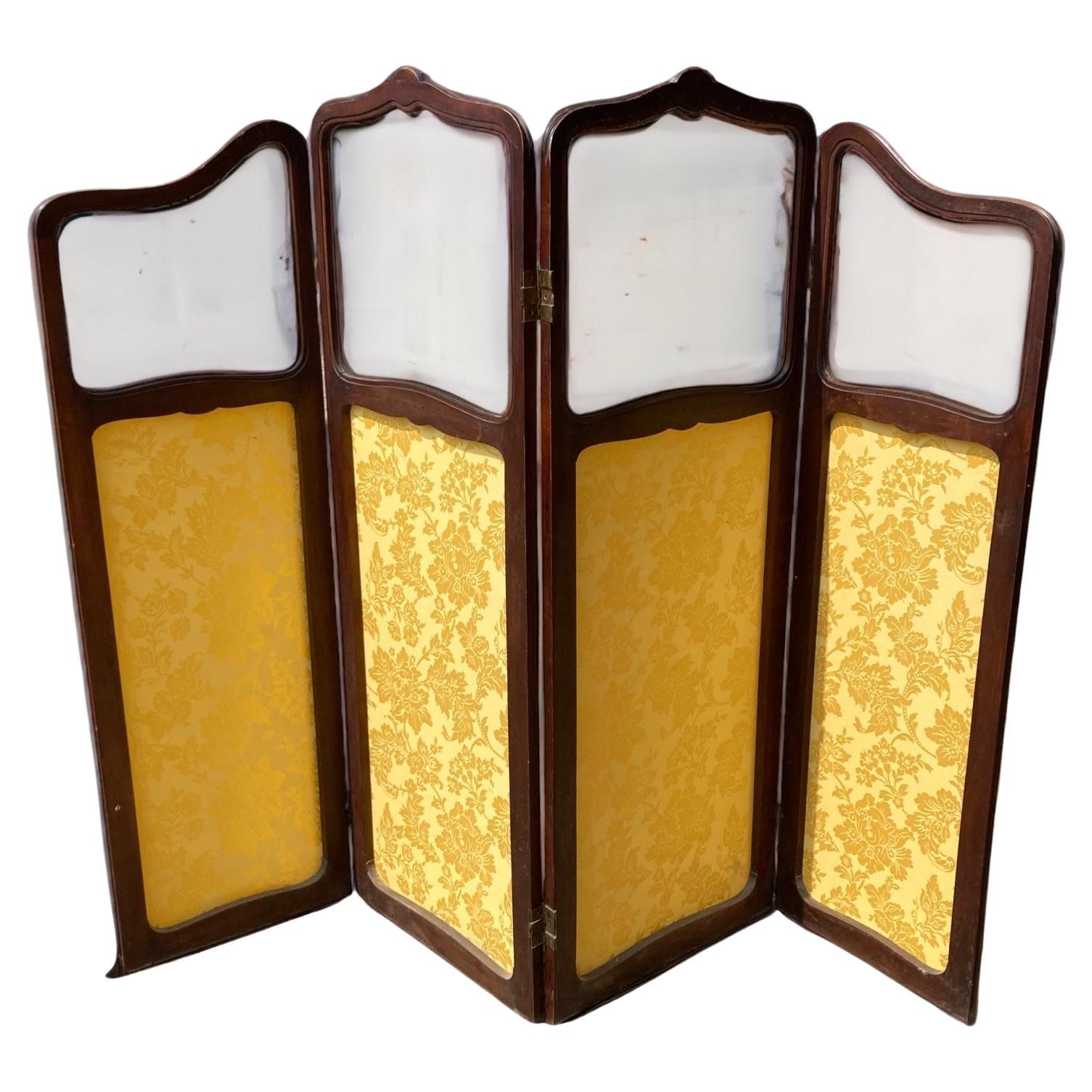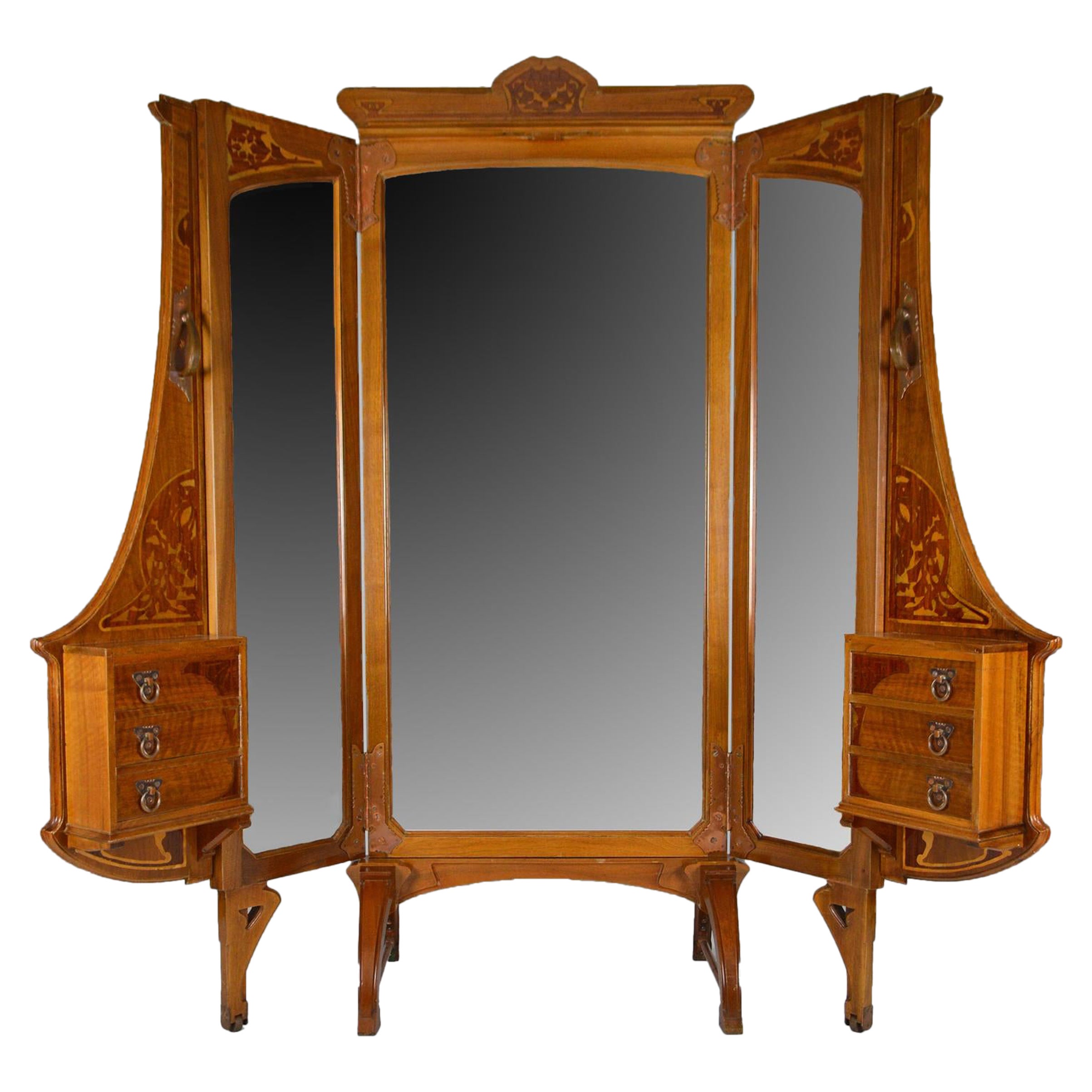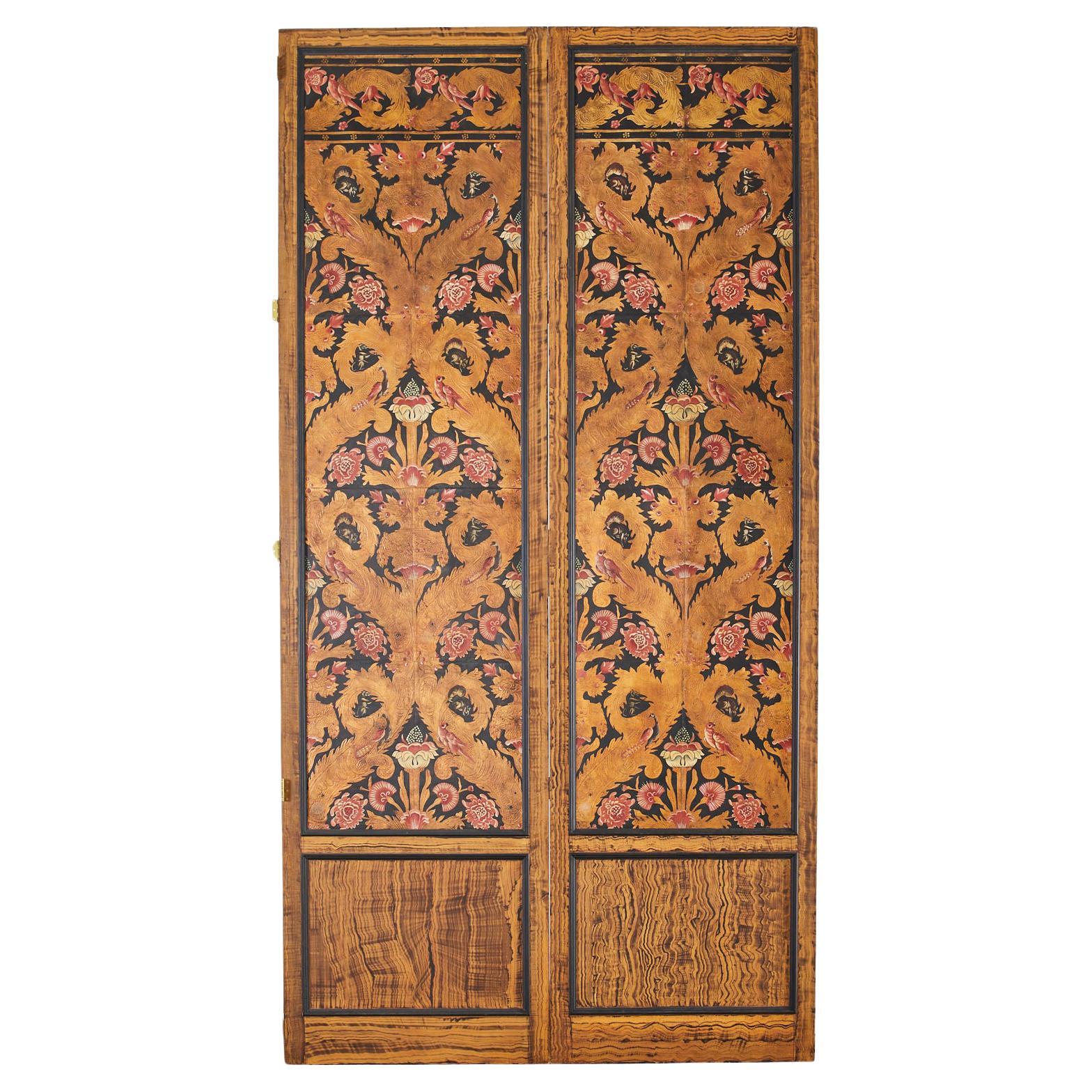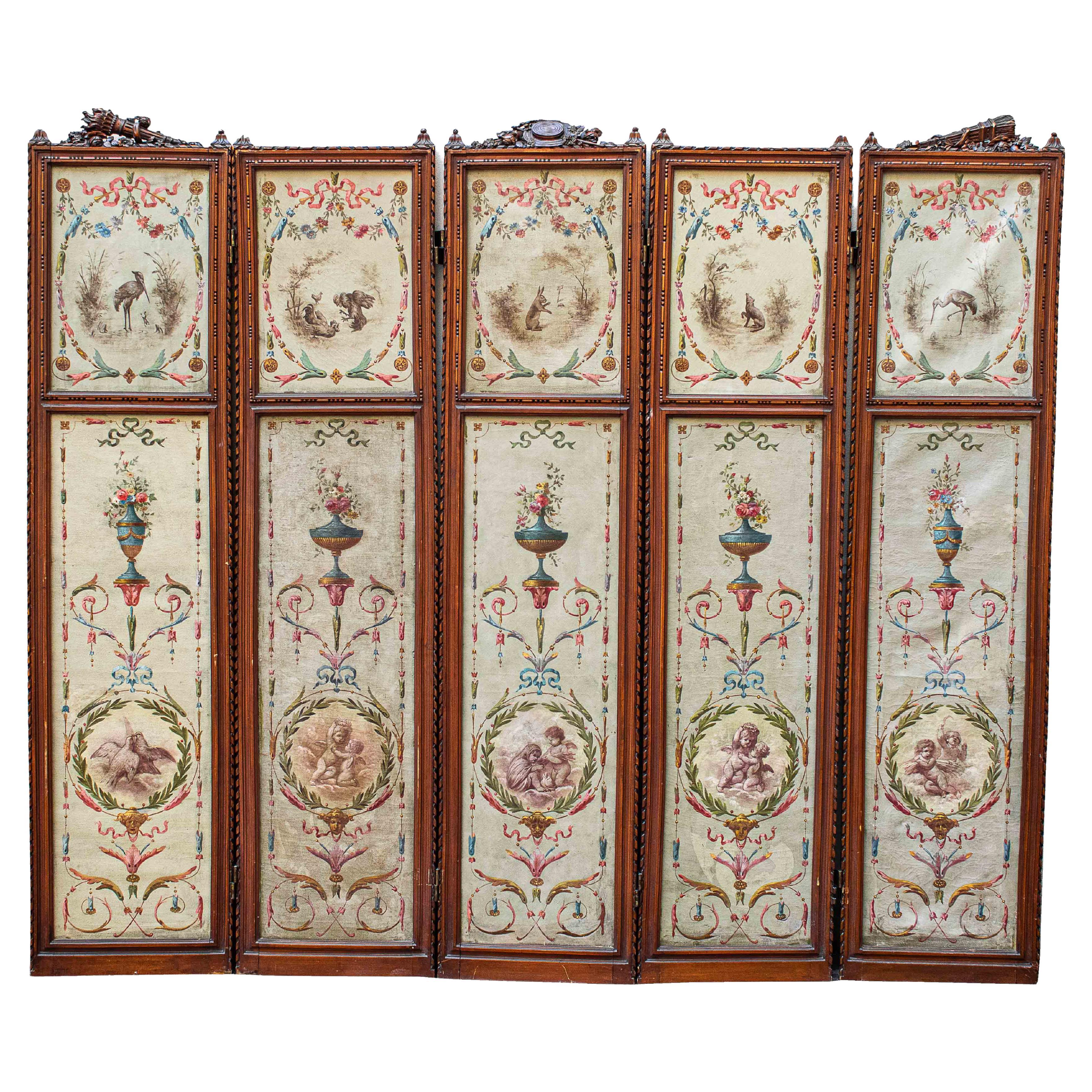Items Similar to Art Nouveau Fireplace Screen, Made of Bamboo, with Painting on Canvas from 1896
Want more images or videos?
Request additional images or videos from the seller
1 of 21
Art Nouveau Fireplace Screen, Made of Bamboo, with Painting on Canvas from 1896
About the Item
Bamboo wood fireplace screen.
The front has a beautiful painting, this is oil on canvas, with a wooden panel behind it. This painting is painted in a typical early Art Nouveau with many elements from nature and the water world. Colors have been beautifully preserved. The painting is signed and dated, 1896. The signature is not legible.
The back is covered with pleated silk fabric.
Made from real bamboo wood. The bamoboo refers to the chinoiserie style, which was in vogue in France at the end of the 19th century.
- Dimensions:Height: 47.25 in (120 cm)Width: 31.5 in (80 cm)Depth: 15.36 in (39 cm)
- Style:Art Nouveau (Of the Period)
- Materials and Techniques:
- Place of Origin:
- Period:
- Date of Manufacture:1896
- Condition:Wear consistent with age and use.
- Seller Location:Casteren, NL
- Reference Number:1stDibs: LU4904216585401
About the Seller
5.0
Platinum Seller
These expertly vetted sellers are 1stDibs' most experienced sellers and are rated highest by our customers.
Established in 2015
1stDibs seller since 2019
523 sales on 1stDibs
Typical response time: 1 hour
- ShippingRetrieving quote...Ships From: Casteren, Netherlands
- Return PolicyA return for this item may be initiated within 7 days of delivery.
More From This SellerView All
- Early 19th Century Art Nouveau Bronze Bookends/Bust - Jacques MarinLocated in Casteren, Noord-BrabantMatching pair of Art Nouveau period bookends or busts. The figurines are made of green patinated bronze, on a Belgian black marble base. The patina on the bronze is in good condition...Category
Antique Early 1900s French Art Nouveau Bookends
MaterialsBelgian Black Marble, Bronze
- Pair of Art Deco Book-Ends with Deers Signed TEDD, Spelter and MarbleLocated in Casteren, Noord-BrabantA lovely pair of bookends. The base is made of marble, with deer statues on top. These are made of spelter, patinated in a bronze color. The figurines are marked 'TEDD'. The set is ...Category
Vintage 1930s French Art Deco Bookends
MaterialsMarble, Spelter
- Art Deco period Spelter Bookend with PinguinsLocated in Casteren, Noord-BrabantAn adorable pair of Art Deco bookends with penguins. The penguins are made of dark gray with gold patinated spelter. Standing on an alabaster base. The sculptures are not signed. Mad...Category
Vintage 1920s French Art Deco Bookends
MaterialsAlabaster, Spelter
- Art Deco Period Marble Bookends with Sculpted DiceLocated in Casteren, Noord-BrabantA pair of Art Deco period bookends with dice, made of Port Nero Marble, the dice are made of white Carrara marble. It is a decorative piece for on a desk or in the bookcase. Made in ...Category
Vintage 1920s French Art Deco Bookends
MaterialsMarble, Carrara Marble
- Early 20th Century Art Deco Bookends with Parrot BirdsLocated in Casteren, Noord-BrabantA pair of bookends from the French Art Deco period. Parrot or Paradise birds, made of casted spelter (zinc alloy) patinated in multiple colors. On onyx marble supports.Category
Vintage 1920s French Art Deco Bookends
MaterialsOnyx, Spelter
- Art Deco Patinated Spelter and Marble Bookends with Gazelle Deer and PalmtreeLocated in Casteren, Noord-BrabantA lovely pair of Art Deco bookends, with images of gazelle / deer under a palm tree. The plinth is made of Breccia marble. The figurines are made of zinc alloy, gold and green patina...Category
Vintage 1920s French Art Deco Bookends
MaterialsBreccia Marble, Spelter
You May Also Like
- Wood Fireplace Screen with Painted Nautical Yacht Scene on CanvasLocated in Oklahoma City, OKWood fireplace screen with a painted circular nautical painting of yacht or pod yacht on the water. A beautiful piece for any living room or country home or beach home. The back ...Category
Antique Late 19th Century English French Provincial Screens and Room Div...
MaterialsCanvas, Glass, Wood, Paint
- Antique French Art Nouveau Fire Screen 1900 fireplace hand painted jugendstilLocated in Ijzendijke, NLDecorative & Breathtaking! This hand painted art nouveau fire screen from france 1900. The screen is not just a screen but also a piece of art. Fully hand painted displaying a floral...Category
Antique Early 1900s French Art Nouveau Screens and Room Dividers
MaterialsMetal
- Art Nouveau four panel screenLocated in Bishop's Stortford, GBArt Nouveau four panel folding screen, Mahogany Frame, glass top floral patterned silk looking fabric bottom. H: 1.5 mtr W: 2.00 mtr fully extendedCategory
Antique 1890s French Art Nouveau Screens and Room Dividers
MaterialsSilk, Glass
- Art Nouveau Vanity Folding Mirror Screen with Marquetry, 1901By Maison KriegerLocated in VÉZELAY, FRExceptional dressing / vanity polyptych folding screen (5 panels). Mahogany structure with inlays / marquetry of different essences with floral motifs. Copper handles, hinges and...Category
Antique Early 1900s French Art Nouveau Floor Mirrors and Full-Length Mir...
MaterialsCopper
- Pair of Art Nouveau Embossed Painted Leather Panel ScreensLocated in Rio Vista, CAExtraordinary pair of massive art nouveau leather inset panel screens featuring flora and fauna embossed and painted designs. The leather panels ar...Category
20th Century American Art Nouveau Screens and Room Dividers
MaterialsLeather, Wood
- 19th Century Screen with Grotesques Painting Oil on CanvasLocated in Milan, ITNineteenth century Screen with grotesques Measures: (5) Oil on canvas, 158 x 185 cm The screen analyzed is made up of five panels, each divided into two panels decorated with elements of the natural world on the upper level and grotesque decorations on the lower level. The grotesque is a type of ornamentation often used in painting, sculpture and minor arts, for example in ceramics and tapestries, developed at the end of the 15th century. The five upper panels refer to as many famous Aesop's fables, i.e. the first panel depicts the fable of The frogs ask for a king, the second panel instead represents the roosters and the partridge, the third panel has as its protagonist the famous fable of the Hare and the tortoise, while the fourth The crow and the fox, while the last panel probably represents the episode of the Fox and the stork. The screen owes its name to its singular and ancient origin; after the discovery of these decorations in 1480 in Nero's Domus Aurea, a palace that had been buried for centuries, under the pretext of imitatio antiquitatis, they were re-proposed in contemporary palaces. The palace of Nero was visited by many explorers, who descended into it and had the impression of being inside a cave, which is why, as Benvenuto Cellini tells us, these particular decorations rediscovered there were called grotesque. The great success that the grotesques had is testified by Raphael's decorations in the Vatican...Category
Antique 19th Century Italian Screens and Room Dividers
MaterialsCanvas, Wood
Recently Viewed
View AllMore Ways To Browse
Art Nouveau Homes
Antique Silk Fabric
Real Bamboo
Real Bamboo Furniture
19th Century French Screens
French Painting On Fabric
Antique Wooden Screen
French Painting Silk
Bamboo Panel Screen
Antique French Fireplace Screen
Wooden French Screen
Antique French Painted Screen
Antique Chinoiserie Painting
Painted Panel Screen French
19th Century Wooden Screens
Antique Art Nouveau Fireplace
Silk Panelled Screen Hand Painted
Painting On Wood Bamboo
